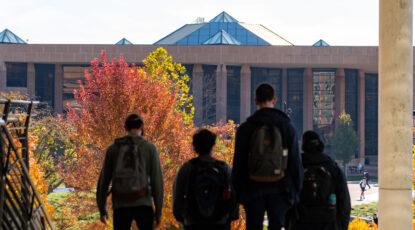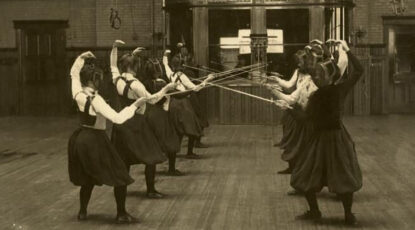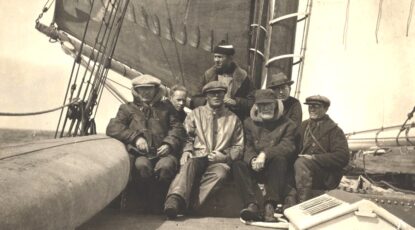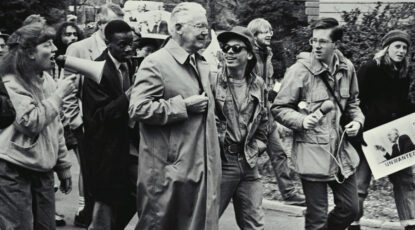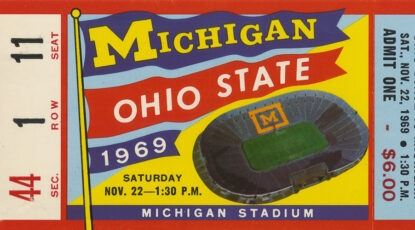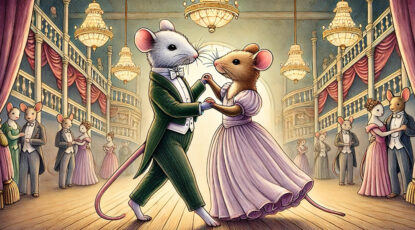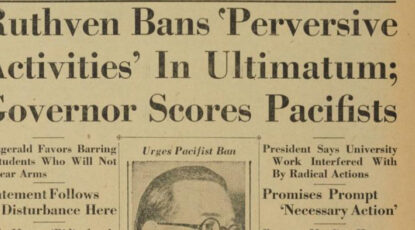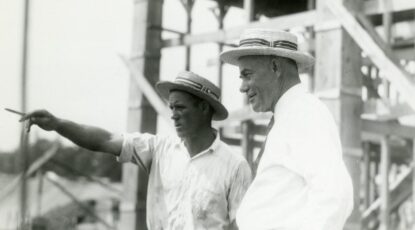Heritage/Tradition
-
The Futurist: Duderstadt and the Media Union
His initiatives spanned the entire U-M campus. But James J. Duderstadt’s vision of higher education’s future — or, more accurately, his ideas for how to bring that future about — came into focus in a single building that rose at the center of North Campus during his U-M presidency. Welcome to the ‘Dude.’
-
A sporting chance
At the onset of the 20th century, women’s athletics expanded in the United States and at the University of Michigan. Women students took up tennis, archery, fencing, horseback riding, and more. The sidelines no longer sufficed, and women were determined to be on the field. But which field would that be?
-
How Michigan planted its flag on Greenland — or tried to
When U-M researcher William Herbert Hobbs traveled to Greenland in the 1920s, he set off on a spree with a map and a pencil, planting Michigan-connected names on practically any feature of the landscape that caught his eye.
-
Who was Robben Fleming?
U-M Regent Philip Power once remarked that Robben Fleming, U-M president from 1968-78, viewed clashes as the engine of progress. Power wasn’t wrong. Fleming’s background in labor law prepared him for the tumultuous decade when student protest and anti-war sentiment captivated the campus.
-
November 1969: ‘It just changed everything’
At spring workouts in 1969, U-M’s new head football coach Glenn E. ‘Bo’ Schembechler unleashed volcanic intensity on his new charges. He told them their overarching aim was to beat Ohio State on Nov. 22. The national press gave the Wolverines absolutely no chance against OSU. But the national press didn’t know Bo.
-
The professor and the waltzing mice
In 1933, when local media reported that a U-M researcher was engaged in a frivolous study about dancing mice, zoologist and University President Alexander Ruthven stepped in to defend the scientist’s reputation. Professor Lee Dice actually was advancing a theory about epilepsy and its genetic causes.
-
The peace protesters vs. the president: 1935
As Adolf Hitler’s power and influence expanded in the lead-up to World War II, college students across the U.S. aligned with their European counterparts in a strike against war and fascism. When they walked out of classes to take an American version of the Oxford Pledge, they sought to preserve the fragile peace in Europe. As with most student protests, the movement disturbed the peace at Michigan.
-
Yost builds the Big (bigger, and biggest) House
When the gates at Michigan Stadium opened to fans on Oct. 1, 1927, the venue could seat 72,000 fans — though heavy rains kept the day’s attendance to under 40,000. Thanks to the expansive vision of coach Fielding Yost, 107,601 fans can gather in Michigan Stadium nearly a hundred years later.
-
When everyone registered in Waterman Gym
Long before online scheduling, U-M students gathered en masse to register for courses, often spending hours in line at Waterman Gym. The lucky ones might get their first choice and find a future spouse in the crowd. The less fortunate walked away dateless clutching a schedule filled with 8 o’clock classes.

